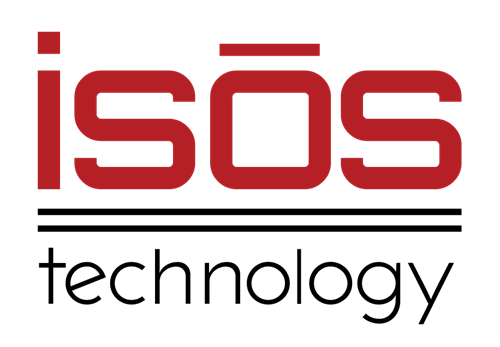 Key Takeaways
Key Takeaways
- Atlassian Cloud offers superior automation, security updates, and AI features without infrastructure maintenance
- Data Center provides more control but requires significant IT resources and receives fewer feature updates
- Cloud pricing is subscription-based while Data Center involves higher upfront and maintenance costs
- Migration planning should begin early to avoid increasing complexity and costs as the gap between platforms widens
- Most organizations achieve positive ROI within three months of Cloud migration through improved productivity and reduced overhead
The decision between Atlassian on-premise (Data Center) and cloud deployment is more consequential than ever. With Atlassian Server support having ended in February 2024 and Data Center costs increasing by 30% in February 2025, organizations must carefully evaluate their options to ensure long-term success with Atlassian products like Jira Software, Confluence, and Bitbucket.
This strategic choice impacts not just your IT infrastructure but your entire organization's ability to collaborate effectively, maintain security compliance, and leverage the latest innovations in project management and development tools. Let's explore the key factors that should drive your decision-making process.
Key Differences Between Atlassian Cloud and Data Center
Deployment Models and Infrastructure Management
Atlassian Cloud operates as a Software-as-a-Service (SaaS) solution where Atlassian handles all hosting, maintenance, and updates on their infrastructure. This cloud-native approach eliminates the need for organizations to manage servers, perform upgrades, or maintain hardware.
Cloud Benefits:
- Zero infrastructure maintenance requirements
- Automatic updates and security patches
- No downtime during upgrades
- Reduced IT operational overhead
Data Center Considerations:
- Self-hosted on your infrastructure or through cloud providers like AWS and Azure
- Complete control over your hosting environment
- Requires internal IT resources and technical expertise
- Responsibility for implementation, maintenance, and security
For organizations with specific regulatory requirements mandating data residency or those with specialized security protocols, Data Center offers the control necessary to meet these demands. However, this control comes with significant responsibility for ongoing maintenance and updates.
Scalability and Performance Considerations
Both deployment options offer scalability, but they approach it differently, affecting your long-term growth strategy with Atlassian tools.
Cloud Scalability:
- Dynamic auto-scaling based on usage patterns
- Seamless resource adjustments without manual intervention
- Approximately 28% faster performance in Jira issue navigation
- No performance degradation during peak usage periods
Data Center Scalability:
- Customizable resource allocation
- Requires manual tuning and hardware adjustments
- Can be deployed as single node or clustered
- Supports large-scale deployments with specific performance requirements
As noted by Mehmet Sari from the Modern Collaboration Platform Team: "With data centers, we had to maintain a big team who was only checking networks, seeing if servers are running [...]. In the Atlassian Cloud, everything is done for us, and there's less downtime and better performance."
Cost Efficiency and Pricing Models
Understanding the financial implications of each deployment option is crucial for making an informed decision that aligns with your budget and growth projections.
Cloud Pricing Model:
- Subscription-based with predictable monthly or annual fees
- Tiered pricing based on user numbers (Free, Standard, Premium, Enterprise)
- No hardware or infrastructure costs
- Reduced IT maintenance expenses
Data Center Pricing Model:
- Annual licensing fees with significant upfront investment
- Additional costs for infrastructure, maintenance, and IT resources
- 30% price increase implemented in February 2025
- Higher total cost of ownership for smaller organizations
Organizations like Rivian have reported saving 36% of annual tool costs by centralizing on Atlassian Cloud, demonstrating the potential financial benefits of cloud migration for enterprises of various sizes.
Security and Compliance Frameworks
Security remains a top concern for organizations evaluating Atlassian deployment options, with each model offering distinct approaches to data protection and compliance.
Cloud Security Features:
- Continuous security updates without manual intervention
- Atlassian Access for centralized identity management and SSO
- IP allowlisting and AI-powered security monitoring
- Compliance with SOC2, SOC3, ISO 27001/27018, GDPR, and HIPAA standards
- Dedicated security team working around the clock
Data Center Security Features:
- Complete control over security protocols and implementation
- Data residency within your chosen infrastructure
- Customizable security measures for specific organizational requirements
- Manual implementation of security patches and updates
- Responsibility for compliance documentation and auditing
While Atlassian Cloud operates on a shared responsibility model, the company handles much of the security heavy lifting, allowing organizations to focus on user access controls and data management rather than infrastructure security.
Innovation and Feature Availability
Perhaps the most significant divergence between Cloud and Data Center lies in access to new features and innovations, particularly in AI and automation capabilities.
Cloud-Exclusive Features:
- Atlassian Intelligence (AI) for automation and insights
- Real-time co-editing in Jira and Confluence
- Advanced roadmaps included natively
- AI-assisted code reviews and issue linking
- Smart links with embedded previews for external tools
- Team-managed projects with independent workflows
Data Center Limitations:
- Delayed access to new features
- No built-in AI capabilities
- Manual setup required for advanced features
- Fewer app integrations as vendors prioritize cloud development
- No real-time collaboration tools
According to Deviniti's analysis, "DC users are paying more for yesterday's tech. Meanwhile, Cloud users are getting new features: AI, automation, and consistent integrations."
Optimizing Collaboration with Atlassian Cloud Solutions
AI-Powered Automation and Productivity
Atlassian Cloud provides built-in AI capabilities that significantly enhance team productivity and streamline workflows across all Atlassian products.
The Atlassian Intelligence platform delivers automation features unavailable in Data Center, including:
- AI ticket triage for automatic routing of support requests
- Smart search with intelligent knowledge suggestions
- AI-powered issue summaries and breakdown
- No-code automation across Atlassian products
- Virtual agents for handling common IT requests
Organizations like Thumbstack have reported resolving 15% of requests with no human involvement through automation and smarter processes, saving over 180 hours per month by automating repetitive tasks.
Data Center users must rely on manual processes or third-party solutions to achieve similar functionality, often with less integration and higher maintenance requirements.
Enhanced Integration Ecosystem
The integration capabilities between Atlassian tools and third-party applications represent another crucial difference between deployment options.
Cloud Integration Benefits:
- Native integrations with Slack, Microsoft Teams, and Salesforce
- Expanding Atlassian Marketplace with cloud-first applications
- No plugin compatibility concerns or version mismatches
- Seamless Trello and Jira synchronization
- Smart links with embedded previews for external tools
Data Center Integration Challenges:
- Fewer app integrations as vendors prioritize cloud development
- Manual updates required for plugins and integrations
- Plugin compatibility issues between versions
- Limited cross-product automation capabilities
- No native integration with modern collaboration tools
One company reported struggling with limited plugin compatibility in their Data Center environment before migrating to Atlassian Cloud, where they gained access to a broader range of integrations and automation tools while reducing costs by 20%.
Real-Time Collaboration Features
Modern work environments demand real-time collaboration capabilities, particularly for distributed and remote teams. Atlassian Cloud excels in this area with features designed specifically for contemporary collaborative workflows.
Cloud Collaboration Features:
- Real-time co-editing in Jira and Confluence
- AI-powered summaries for team discussions
- Inline comments and visual whiteboards
- Scheduled page publishing for planned content releases
- Mobile security and MDM support for remote work
Data Center Collaboration Limitations:
- No real-time co-editing capabilities
- Manual sharing of updates required
- Limited mobile security features
- No guest access for external collaboration
- No visual collaboration tools
Nextiva transformed their Confluence from a tool used only by IT to an enterprise-wide collaboration hub after migrating to Cloud, with teams across marketing, HR, and sales now using built-in templates and automation to manage projects, reducing setup time and increasing adoption.
Streamlined IT Service Management with Cloud Solutions
Incident Management and Response
For IT departments, effective incident management is crucial to maintaining system reliability and user satisfaction. Atlassian Cloud offers advanced ITSM capabilities that enhance incident response and resolution.
Cloud ITSM Advantages:
- AI-powered issue classification and prioritization
- Smart root cause tracking for recurring problems
- Built-in Opsgenie for automated incident response
- Conversational ticketing in Slack and Teams
- Automated change risk analysis and CI/CD approvals
Data Center ITSM Limitations:
- Manual issue classification and resolution
- No AI-powered root cause tracking
- Opsgenie requires separate setup and maintenance
- No chat-based ticketing capabilities
- Change risk analysis must be performed manually
These differences significantly impact IT teams' ability to respond quickly to incidents and maintain service levels, with Cloud providing automated tools that reduce manual intervention and accelerate resolution times.
Developer Experience and DevOps Integration
For development teams, Atlassian Cloud offers enhanced tools specifically designed to improve the developer experience and streamline DevOps workflows.
Cloud Developer Benefits:
- AI-assisted code reviews and issue linking
- Predictive DevOps analytics for risk detection
- Bitbucket Pipelines for built-in CI/CD
- Automated security scans in pull requests
- Deployment tracking dashboards for real-time insights
Data Center Developer Limitations:
- No AI assistance for code reviews or issue management
- No predictive analytics for identifying potential risks
- CI/CD setup requires third-party tools and maintenance
- Security scanning requires external solutions
- No built-in deployment tracking capabilities
These differences impact development velocity and code quality, with Cloud users benefiting from automation and intelligence that reduces manual overhead and accelerates delivery cycles.
Migration Considerations and Timing
Planning Your Migration Strategy
With Atlassian's clear direction toward cloud prioritization, organizations still using Data Center should consider their migration timeline carefully. The longer the delay, the more complex and potentially costly the migration becomes.
According to migration experts, timelines vary based on organization size:
- Small migrations (up to 1,000 users): Approximately 3 months
- Mid-sized migrations (1,000-5,000 users): Approximately 6 months
- Large migrations (over 5,000 users): 9 months or longer
Creating a dedicated migration team is essential, including application administrators, system administrators, project managers, and specialists in network engineering, database management, site reliability, and security.
When Data Center Remains Appropriate
Despite Atlassian's cloud focus, certain scenarios may still warrant maintaining Data Center deployment:
- Regulatory requirements not addressed by Cloud solutions
- Legal mandates for on-premises data storage
- Specialized integration requirements with legacy systems
- Extensive customizations not supported in Cloud
Organizations in these situations should still develop a long-term strategy, as Atlassian's investment in Data Center continues to diminish relative to Cloud development.
Frequently Asked Questions
Is Atlassian officially discontinuing Data Center?
While not officially announced, Atlassian's focus is clearly on Cloud solutions. Feature development for Data Center is slowing significantly, with a 30% price increase implemented in February 2025. Organizations should anticipate a potential phase-out in the future and plan accordingly.
How secure is Atlassian Cloud?
Atlassian Cloud follows strict security measures, including industry-standard compliance certifications (SOC2, SOC3, ISO 27001/27018, GDPR, HIPAA), automatic security updates, and built-in security features like IP allowlisting and AI-powered security monitoring.
Will I lose data during migration?
With proper planning and execution, data loss during migration can be avoided. Atlassian Partners offer expert guidance to ensure smooth transitions with minimal risk. Comprehensive testing and validation processes are essential components of successful migrations.
Is Cloud more expensive than Data Center?
Not necessarily. While Cloud uses subscription-based pricing, it eliminates on-premises maintenance costs, infrastructure expenses, and IT overhead. Many organizations find that productivity improvements and reduced operational costs offset licensing expenses, with companies like Rivian reporting 36% savings after migration.
Can organizations use both Cloud and Data Center simultaneously?
Yes, a hybrid approach allows organizations to maintain sensitive operations on-premises while leveraging Cloud for other functions. However, this approach requires users to navigate between different environments, potentially causing workflow disruptions and duplicate efforts.
What are the main differences between Atlassian Cloud and Data Center?
Atlassian Cloud is a SaaS solution hosted and maintained by Atlassian, offering automatic updates, built-in security, and exclusive AI features. Data Center is self-hosted on your infrastructure, providing more control but requiring internal resources for maintenance and updates.
How does pricing compare between Cloud and Data Center?
Cloud uses a subscription model with tiered pricing based on user numbers, while Data Center requires annual licensing fees plus infrastructure and maintenance costs. Many organizations report overall cost savings after migrating to Cloud despite subscription fees.
Will my Atlassian apps work in Cloud?
Most popular Atlassian apps have Cloud versions, but not all. Marketplace vendors are increasingly prioritizing Cloud development, with some apps becoming Cloud-exclusive. Before migration, inventory your apps and check compatibility with Cloud equivalents.
How long does migration from Data Center to Cloud typically take?
Migration timelines vary by organization size: small migrations (up to 1,000 users) take approximately 3 months, mid-sized migrations (1,000-5,000 users) about 6 months, and large migrations (over 5,000 users) 9 months or longer.
What security certifications does Atlassian Cloud maintain?
Atlassian Cloud maintains comprehensive security certifications including SOC2, SOC3, ISO 27001/27018, PCI DSS, GDPR, and HIPAA compliance, with continuous security updates and monitoring.
Can I customize Atlassian Cloud like I do with Data Center?
Cloud offers less extensive customization than Data Center but provides team-managed projects with independent workflows and a growing set of configuration options. Many organizations find Cloud's native capabilities reduce the need for complex customizations.
What happens if I stay on Data Center?
Organizations remaining on Data Center face increasing costs, fewer feature updates, limited app options as vendors prioritize Cloud development, and potential future migration challenges as the gap between platforms widens.
Does Atlassian Cloud support compliance requirements?
Yes, Atlassian Cloud supports major compliance frameworks including GDPR, HIPAA, and SOC2. For organizations with specific regulatory requirements not addressed by Cloud, Data Center remains an option while those requirements are added to the Cloud roadmap.
How does performance compare between Cloud and Data Center?
Cloud performance has improved significantly, with Jira issue navigation approximately 28% faster than older versions. Cloud also offers auto-scaling during peak usage periods without manual intervention, while Data Center performance depends on your infrastructure and tuning.
What AI capabilities are available in Atlassian Cloud?
Atlassian Intelligence provides AI-powered automation including ticket triage, smart search, issue summaries, code reviews, predictive analytics, and virtual agents—all exclusive to Cloud with no equivalent features in Data Center.
Key Takeaways
- Strategic Direction: Atlassian is clearly prioritizing Cloud development, with limited innovation for Data Center products
- Cost Considerations: Cloud offers predictable subscription pricing while eliminating infrastructure costs; Data Center requires significant upfront investment and ongoing maintenance
- Feature Availability: Cloud provides exclusive access to AI, automation, and real-time collaboration features unavailable in Data Center
- Security & Compliance: Both options offer robust security, but with different responsibility models—Cloud handles much of the security heavy lifting
- Migration Timing: Organizations should begin planning Cloud migrations now to avoid increased costs and complexity later
Final Thoughts on Choosing Between Atlassian On-Premise and Cloud
The decision between Atlassian on-premise and cloud solutions ultimately depends on your organization's specific requirements, regulatory constraints, and strategic priorities. However, Atlassian's clear investment direction toward Cloud makes it the preferred option for most organizations looking to maximize value, innovation, and future-readiness.
As noted by industry experts, "At what point does staying on-prem stop being a preference and start being a bad business decision?" With 75% of surveyed customers reporting tangible returns from cloud migration within three months, the business case for Cloud continues to strengthen.
Organizations should conduct a thorough assessment of their current Atlassian environment, identify potential migration challenges, and develop a strategic roadmap for transitioning to Cloud—or for maintaining a Data Center with a clear understanding of the trade-offs involved.
Sources:
Sign up to receive more great content
Learn more about Atlassian and how Isos can help by signing up to receive our latest blogs, eBooks, whitepapers and more.













